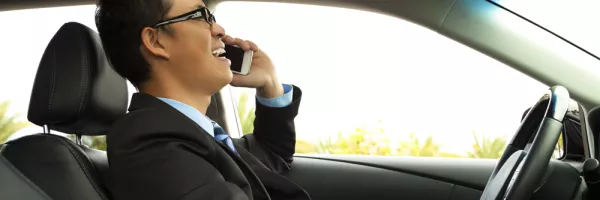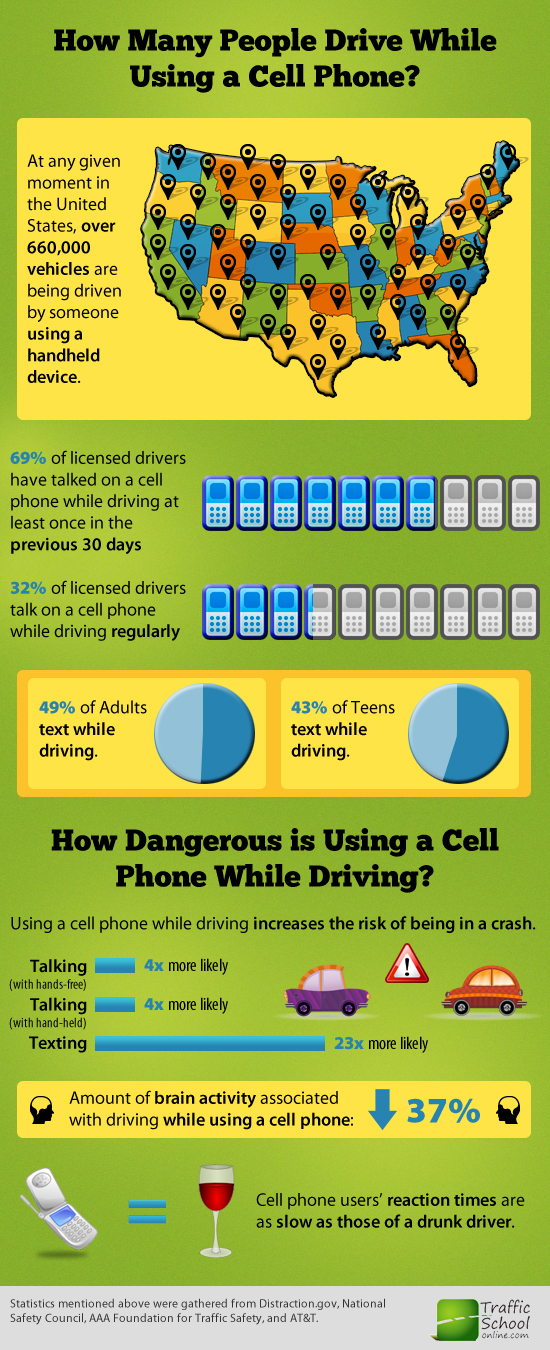
Are You Paying Attention?
This is the first post of a two part series in recognition of Distracted Driving Awareness Month, a national campaign against cell phone use while driving.
Cell phone use while driving is now being targeted by researchers, lawmakers, and law enforcement officials as one of the most important driving safety issues today, and for good reason.
If you've ever seen a driver drifting out of their lane while texting, or you've found yourself braking suddenly as traffic slows because you were distracted by your phone conversation, then you already know that driving distracted can be a hazard. But just how badly does it impair your driving performance, and how can you avoid the distraction?
This April, law enforcement agencies across the country are cracking down on drivers using cell phones as part of the national Distracted Driving Awareness Month campaign. With many police departments planning zero-tolerance enforcement of existing laws, this month is a great opportunity to kick your distracted driving habit once and for all.
Tips to Help You Stay Focused
Remove the Temptation
Make calls or send texts before you drive, and put your phone out of reach while you’re behind the wheel.
Take Advantage of Smartphone Apps
If you have trouble resisting the urge to use your phone, there are plenty of smartphone apps available to help.
- Many cell phone carriers have developed their own apps for their customers, including AT&T’s Drive Mode, Sprint’s Drive First, and T-Mobile’s Drive Smart.
- DriveSafe.ly is a free app for Blackberry, Android, and iPhone which will read your text messages out loud and send an automatic reply.
- SafeCell automatically activates when it detects movement faster than 5 MPH, intercepts text messages and calls, and sends an automatic reply. It’s available for iPhone and Android devices at a cost of $11.99 per year.
- TextNoMore is available for free on Blackberry and Android devices. The app turns off notifications for texts and calls, and sends an automatic text reply.
Be Aware of Current Laws
Be aware of current laws in the states and cities you plan to drive in.
Distracted driving is currently a hot topic for state legislators, and many states are passing updated laws. Distraction.gov, the official US government website for distracted driving awareness, provides an interactive map to help drivers review cell phone laws.
Create a Workplace Policy
Are you an employer? The National Safety Council provides resources for employers seeking help creating and implementing cell phone policies, and even offers a free seminar on building support for a cell phone policy in the workplace.
Notify Friends Ahead of Time
Let your friends and family know that you won’t be able to answer the phone while you are driving, and that you’ll return their text or call as soon as you can do so safely. Encourage them to do the same!
How Dangerous is Distracted Driving?
Besides preventing expensive tickets, saving your calls and texts for before and after you drive can help you avoid serious safety risks.
- Talking on a cell phone makes you four times more likely to crash, with no difference in crash risk between using hands-free and hand-held devices (Distraction.gov).
- Texting makes you 23 times more likely to crash. Text messaging takes your eyes off the road for 4.6 seconds on average. At 55 MPH, that means traveling the length of a football field without looking at the road (Distraction.gov).
- Using a cell phone reduces the amount of brain activity associated with driving by 37% compared to undistracted driving (Distraction.gov).
- Cell phone users’ reaction times are as slow as those of a drunk driver. A study by the University of Utah found that drivers using cell phones had reaction times as slow as those of a driver with a blood alcohol content of .08%, above the legal limit to drive in the United States (National Safety Council).
Looking for More Information?
The National Safety Council provides a detailed list of links to key research studies on distracted driving. SR22Insurance.net also provides a comprehensive list of government and privately-funded distracted driving studies.
Distraction.gov offers facts and statistics as well as ways for teens, parents, educators, and employers to take action.

Click here to learn how children can also cause distracted driving